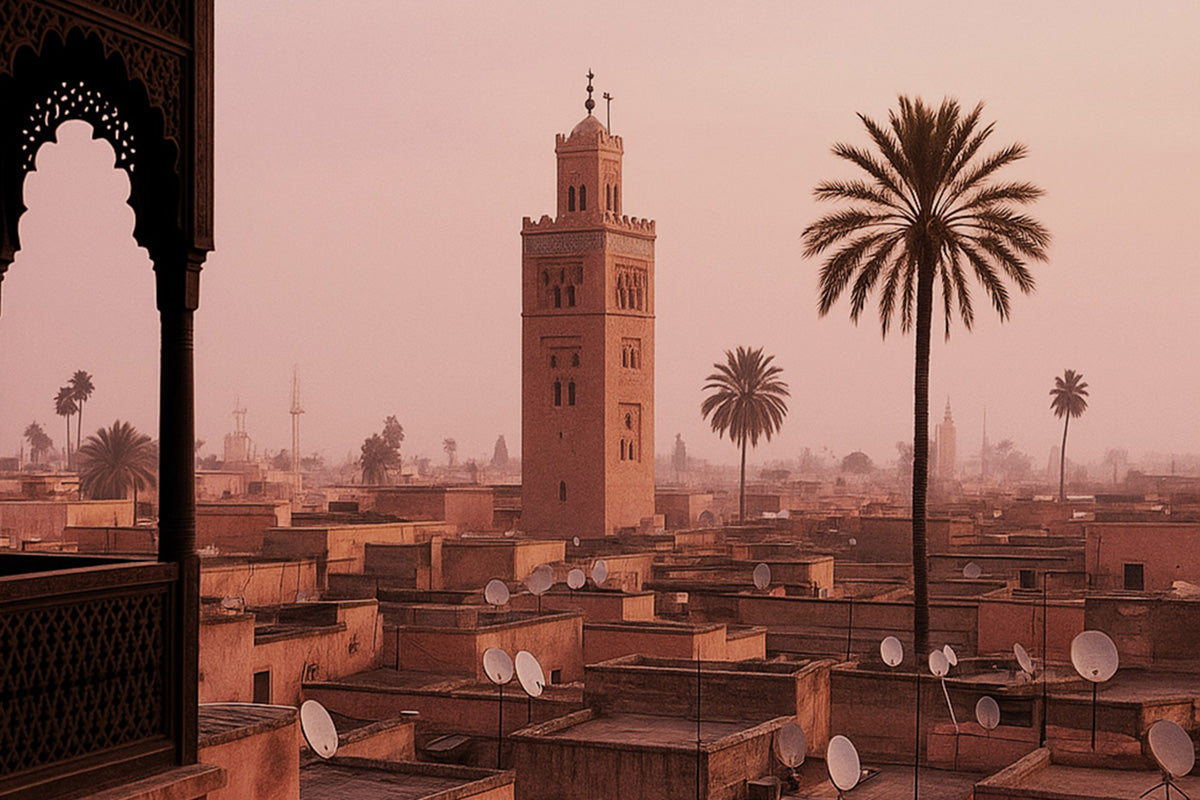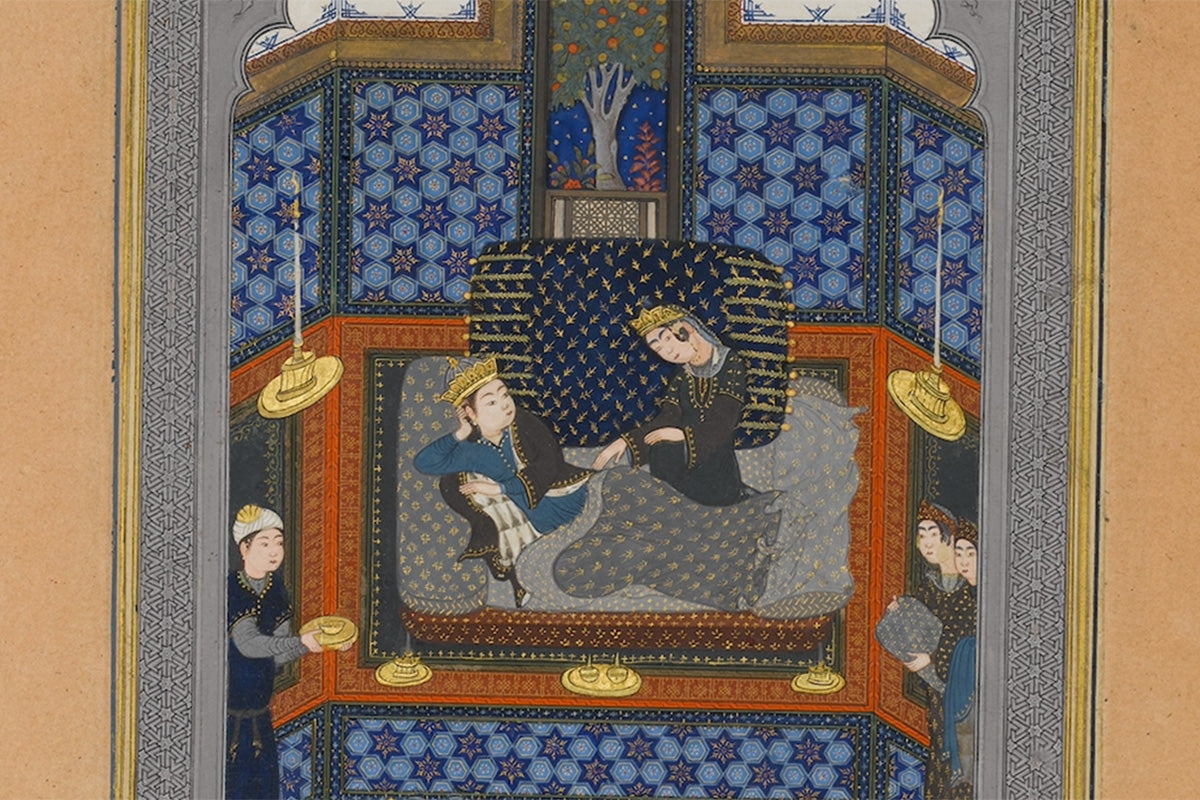Article: Marrakech - the Red City

Marrakech - the Red City
The city of Marrakech, almost a thousand years old, glows a warm orange red in the fading evening light. The iconic hue of the Medina emanates from the very earth itself - the clay of the semi-arid Haouz plain.
The Almoravids, the original 11th century Berber founders, used the abundant clay, rich in iron oxide, to build the city, the iron oxide imbuing Marrakech with its recognisable colour and earning it the nickname, the Red City. Layers of history have softened and deepened the tones to a spectrum of dusty rose, ochre, and burnt sienna.

Marrakech skyline, in ochre (image generated with AI)
The iron-rich clay used to build the city holds light in a way that few other materials do — absorbing, reflecting, and deepening in colour as the day progresses.
In the early morning, the city glows a soft, muted rose, as if waking slowly. By midday, under the fierce Moroccan sun, the walls blaze with a near-orange intensity, the heat and colour creating an almost tactile atmosphere. As evening falls and the sun slips behind the Atlas Mountains, the city seems to melt into itself, bathed in hues of deep copper and dusky gold.
 Ava Scarf - Mocha - long scarf, in silk twill
Ava Scarf - Mocha - long scarf, in silk twill
(image generated with AI and photography)
It’s in these transitions and the interplay of material and light, that the streets narrow into shadowed corridors, the courtyards are flooded with honeyed light and distant rooftops blur into the dusty horizon.
Today, the old medina remains largely built from that same earth, but in newer parts of the city, modern materials like concrete have replaced the traditional red sandstone. Strict urban regulations require that contemporary buildings are coated in a red-pink render, preserving the city’s historic character and visual continuity.
Marrakech still appears, from a distance, as it has for centuries: a shimmering red mirage against the blue and white of the Atlas horizon. The continuity between material and memory gives Marrakech an everlasting appeal.

A traditional street in Marrakech (image generated with AI)
